The Mid-Autumn Festival (中秋節) falls on the 15th day of the eighth month of the lunar calendar and, weather permitting, it could be more than just a day off work. Traditionally marked with family gatherings to gaze at the moon and eat moon cakes (月餅), the Autumn holiday has been transformed to take on other outdoor social activities such as barbecuing and, this year in Taipei, experimental theater. Here is a small guide to your options for the day.
Barbecues
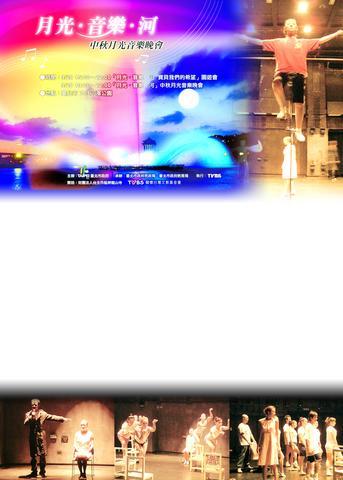
PHOTO COURTESY OF SHAKESPEARE'S WILD SISTER GROUP
Barbecues have been a commercial success for supermarkets and markets that sell meats and vegetables, best reflected in the number of shops selling disposable barbecues and equipment along with pre-skewered and packaged foods.
There is, however, no significant cultural or historical reason behind this now common practice of barbecuing for the Mid-Autumn festival.
House and store fronts where people would once place stools and small tables filled with mooncakes and cups of tea to be shared by family members are now taken up by small barbecues with skewers of meat, tofu, and vegetables.
The sidewalk may not provide an ideal location for a barbecue feast but it is quickly becoming the only legal one. Surprisingly (considering the number of people who do it), barbecuing in all city and natural parks is illegal, but until a proposed bill passes for a NT$1,500 fine, police can only ask individuals to clean up and go home.
Mooncakes
Mooncakes have been a key part of Mid-Autumn celebrations dating back to the Yuan Dynasty (1280 to 1368). According to popular legend, leaders from the preceding Sung dynasty (960 to 1280) were unhappy with their Mongolian rulers and wanted to coordinate a rebellion without being discovered.
Mooncakes, traditionally unpalatable to Mongolians, were distributed to potential rebels. Upon eating them they found a message inside detailing a uprising to be held on the 15th day of the eighth month.
In place of the revolutionary notes, today there are a range of equally controversial fillings. More traditional cakes include lotus seed, red bean, green bean or black bean paste with a salty yolk in the middle to represent the full moon, while more elaborate cakes range from fruit preservatives, nuts, green tea or dried meat variations to the latest and tastiest addition of ice cream mooncakes.
Events
Two of the largest outdoor celebrations taking place around the city are an avant-garde theater production and some wholesome family entertainment. Whatever it may be, public transport users can stay out a little bit later, as the MRT will extend its service by one hour, just one more reason to celebrate.
This year the Taipei City Government department of Civil Affairs is holding a family- oriented Mid-Autumn Festival of activities in the park today. The show is scheduled to open at 3pm. Geared towards afternoon and evening family entertainment, Chan Yi Chia (
In the evening there will be live entertainment with performances by Cheng Hsin-che (
People can bring their own food and drink or take advantage of the numerous, reasonably priced vendors that will be operating the entire day. When asked if there were would be any barbecuing on-site, Chan replied, "It's prohibited. And anyway, barbecuing is not a Chinese moon festival activity."
The event is at Riverside Park (
Theatrics
Perhaps the most original festivity will be a production by Shakespeare's Wild Sisters Group (
Rather than keep within the constraints of popular lore, Wang explained in a telephone interview that he put a spin on a traditional tale to make it more "other worldly."
"I played with the characters from the stories and wrote my own script about a couple that gets abducted by aliens. It's more entertaining and exciting."
And with the addition of more than 30 dancers, actors and acrobats from the Taiwan Drama School Performing Group, along with DJs, musicians and visuals, it will be a lot more spectacular.
Invited by the National Chiang Kai-Shek Cultural Center (
Children will undoubtedly be amused by the acrobatic performance, while older generations will, Wang hopes, follow the plot of his twisted holiday romance. Penned by Wang, the story tells of two young lovers who in the midst of a domestic feud are kidnapped by extraterrestrials and taken to the moon to ponder their relationship woes in solitude, before being returned to earth.
Due to the traditionally unfavorable Mid-Autumn weather conditions, which prohibited weekend rehearsals, the show will not be held today as originally scheduled, but will be on Saturday.
It is in the courtyard of CKS Cultural Center, located at 21-1 Zhongshan S Rd, Taipei (
Stories behind legends of the moon
The Woman on the Moon (Legend of Chang Er)
There are several variations on this legend but most begin with the sky being lit by 10 suns, which scorched the earth and its crops. To save the world a skilled archer, Hou Yi, shot down nine of the suns. From here the story varies. Some say the nine suns were the sons of the Jade Emperor, who angered by his loss, banished Hou Yi and his wife Chang Er from earth, but that a goddess took pity on Hou Yi and gave him an elixir of immortality. Others say that Chang Er stole the potion and after drinking it, began floating upwards into the sky where she took refuge on the moon.
The Man on the Moon (Legend of Wu Kang)
Wu Kang is a woodcutter who is obsessed, like Chang Er, with the idea of living forever. Having pleaded with a sage to learn the magic of immortality, Wu Kang becomes impatient and angers the master, who eventually sends him to the moon. Told he can return to earth once he has cut down a cassia tree, Wu Kang remains to this day on the moon, chopping a tree that magically restores itself.
The Hare on the Moon (Legend of Jade Rabbit)
Here is a tale in which being sent to the moon is seen as a reward instead of being a punishment, as seems tradtional. Three beggars came upon a rabbit and ask it for food. Having nothing to offer them, he sacrifices his life for the men and throws himself into a fire to be cooked. The men, who were sages in disguise, decide to reward the rabbit by sending him to the moon where he will be known forever as the Jade Rabbit.
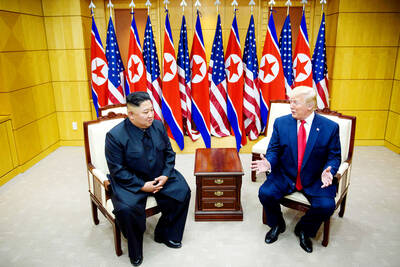
US President Donald Trump may have hoped for an impromptu talk with his old friend Kim Jong-un during a recent trip to Asia, but analysts say the increasingly emboldened North Korean despot had few good reasons to join the photo-op. Trump sent repeated overtures to Kim during his barnstorming tour of Asia, saying he was “100 percent” open to a meeting and even bucking decades of US policy by conceding that North Korea was “sort of a nuclear power.” But Pyongyang kept mum on the invitation, instead firing off missiles and sending its foreign minister to Russia and Belarus, with whom it
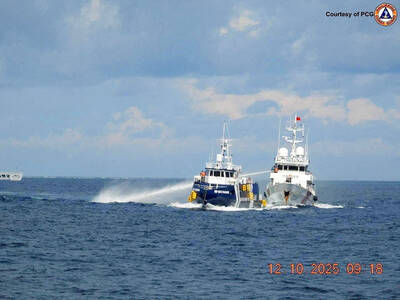
Many people noticed the flood of pro-China propaganda across a number of venues in recent weeks that looks like a coordinated assault on US Taiwan policy. It does look like an effort intended to influence the US before the meeting between US President Donald Trump and Chinese dictator Xi Jinping (習近平) over the weekend. Jennifer Kavanagh’s piece in the New York Times in September appears to be the opening strike of the current campaign. She followed up last week in the Lowy Interpreter, blaming the US for causing the PRC to escalate in the Philippines and Taiwan, saying that as
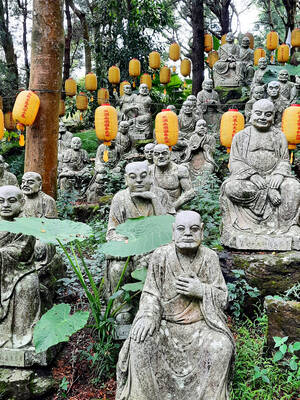
When Taiwan was battered by storms this summer, the only crumb of comfort I could take was knowing that some advice I’d drafted several weeks earlier had been correct. Regarding the Southern Cross-Island Highway (南橫公路), a spectacular high-elevation route connecting Taiwan’s southwest with the country’s southeast, I’d written: “The precarious existence of this road cannot be overstated; those hoping to drive or ride all the way across should have a backup plan.” As this article was going to press, the middle section of the highway, between Meishankou (梅山口) in Kaohsiung and Siangyang (向陽) in Taitung County, was still closed to outsiders
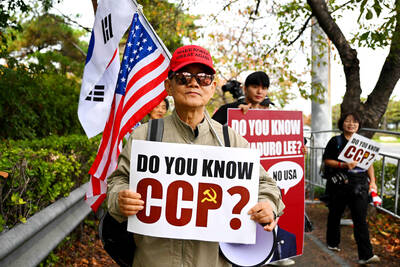
The Chinese Communist Party (CCP) has a dystopian, radical and dangerous conception of itself. Few are aware of this very fundamental difference between how they view power and how the rest of the world does. Even those of us who have lived in China sometimes fall back into the trap of viewing it through the lens of the power relationships common throughout the rest of the world, instead of understanding the CCP as it conceives of itself. Broadly speaking, the concepts of the people, race, culture, civilization, nation, government and religion are separate, though often overlapping and intertwined. A government